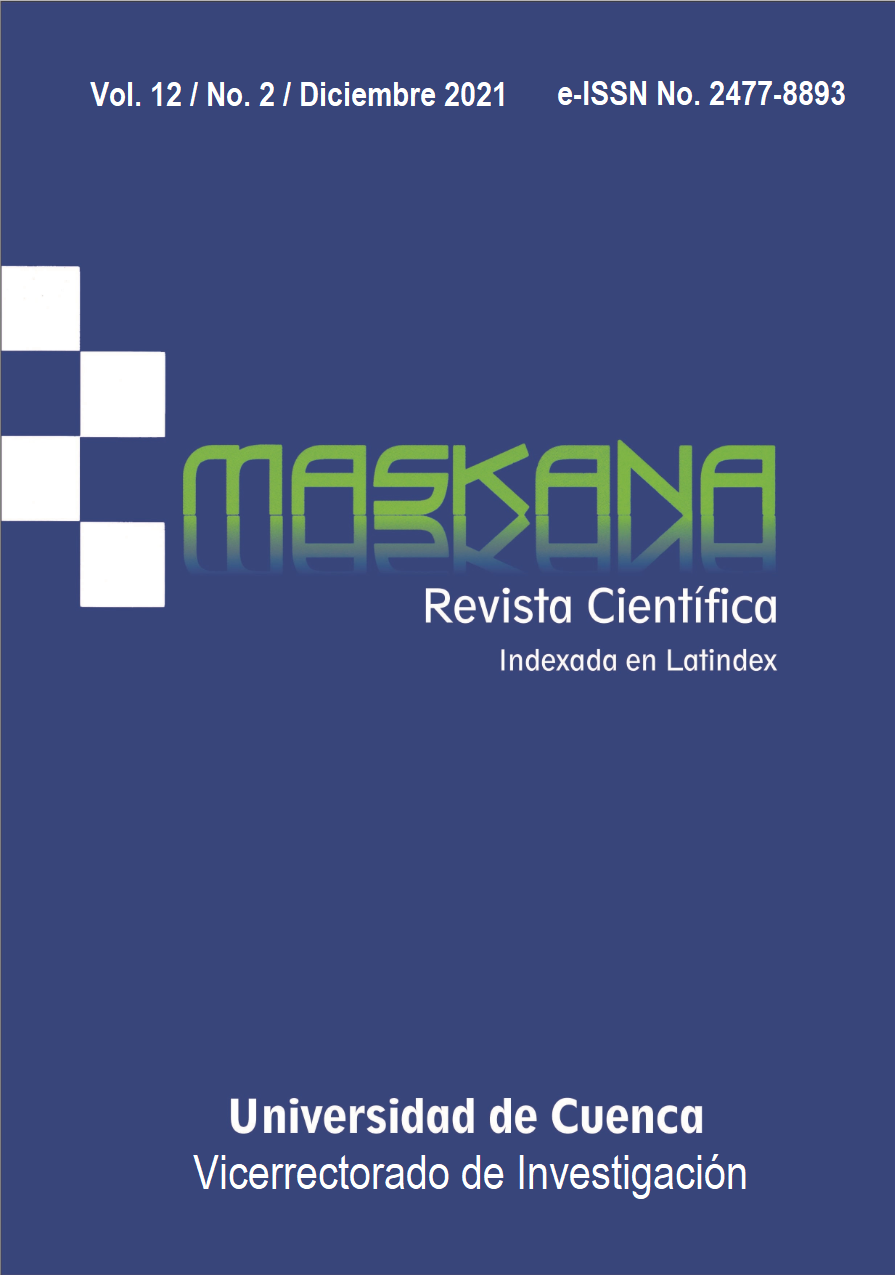Stress analysis in whitetopping concrete pavements: Case study the Biblián-Zhud highway
DOI:
https://doi.org/10.18537/mskn.12.02.09Keywords:
Rigid pavement, deterioration, whitetopping, stressAbstract
This article presents the results of a retrospective analysis to explain the probable causes of the premature deterioration of the rigid pavement of the Biblián-Zhud highway, main artery connecting the southern with the northern zone of the country. Based on the characteristics of the road and traffic loads, an analysis of the stresses generated in the pavement slabs is conducted. Stresses are determined through analytical equations and finite element methods. The results by both methods are remarkably similar. In addition, by using finite elements, the effect of variations in loads and pavement thickness on stress was also analyzed. The analysis reveals that under the current loads and due to the variations in thickness, the rigid pavement of the road does not support the stresses to which it is subjected, clearly identifying the development of different failure mechanisms, the most concurrent being corner cracks, transversal and longitudinal cracks.
Downloads
Metrics
References
AASHTO. (1993). AASHTO Guide for design of pavement structures. American Association of State and Highway Transportation Officials, Washington, DC, U.S.
ACPA. (2002). Portland cement concrete overlays: State of the technology synthesis. American Concrete Pavement Association. Product Code SP045P. Skokie, IL, U.S.
ACPA. (2011). AirPave guide ACPA. American Concrete Pavement Association, 9450 Bryn Mawr, Suite 150 Rosemont, IL 60018, U.S.
ASTM D6433. (2007). Standard practice for roads and parking lots pavement condition index surveys. ASTM International, West Conshohocken, PA, www.astm.org.
Davids, B. (2003). EverFE theory manual. University of Maine, Civil Engineering Department, U.S.
Davids, W. G., Wang, Z. M., Turkiyyah, G., Mahoney, J., & Bush, D. (2003). Finite element analysis of jointed plain concrete pavement with EVERFE 2.2. Journal of the Transportation Research Board, National Research Council, US, 92-99.
DIRCAIBEA. (2002). M5.2. Catálogo de deterioros de pavimentos rígidos. Reporte técnico. Consejo de Directores de Carreteras de Iberia e Iberoamérica.
Eacker, M. (2004). Three year evaluation of whitetopping projects on M-46. Michigan Department of Transportation, U.S.
Harrington, D., Fick, G. (2014). Guide to concrete overlays, sustainable solutions for resurfacing and rehabilitating existing pavements. 3ra ed. American Concrete Pavement Association, ACPA.
Huang, Y. (2012) Pavement analysis and design. Pearson/Prentice Hall, 2da edición.
INAMHI. (2015). Anuario meteorológico, Nro. 52-2012. Instituto Nacional de Meteorología e Hidrología, Quito, Ecuador.
Maske, N. A., Anandkumar, A., & Majumder, A. (2013). Analysis of rigid pavement stresses by finite element method & Westergaard’s method by varying sub-grade soil properties. International Journal of Engineering Science Invention, 2(3), 52-55.
Miller, J., & Bellinger, W. (2014). Distress identification manual for the long-term pavement performance program. U.S. Department of Transportation - Federal Highway Administration. Publication NO. FHWA-HRT-13-092.
MTOP. (2018). Informe de tráfico en la vía Zhud-Biblián, sector San José de Inganilla. Reporte técnico. Ministerio de Transporte y Obras Públicas, Ecuador.
Lin, D. F., & Wang, H. Y. (2005). Forensic investigation of ultra-thin whitetopping failures in Taiwan. ASCE Journal of Performance of Constructed Facilities, 19(2).
PCA. (1984). Thickness design for concrete highway and street pavements. Portland Cement Association, U.S.
Rasmussen, R. O., McCullough, B., Ruiz, J., Mack, J., & Sherwood, J. (2002). Identification of pavement failure mechanisms at FHWA accelerated loading facility ultrathin whitetopping project. Transportation Research Record, 1816(1), 148-155. htpps://doi.org/10.3141/1816-16
Rasmussen, R. O., & Ayers, M. (2003). Performance and design of whitetopping overlays for heavily trafficked pavements. Final Report for Concrete Pavement Technology Program Tas 3(99). Federal Highway Administration, Washington, D.C., U.S.
Rasmussen, R. O., & Rozycki, D. K. (2004). Thin and ultra-thin whitetopping - A synthesis of highway practice. NCHRP Synthesis 338, Transportation Research Board, Washington, D.C., U.S.
Rea, R. C., & Jensen, W. G. (2005). A concrete overlay on an asphalt road. The International Journal of Pavement Engineering, 6(2), 111-114. htpps://doi.org/10.1080/10298430500068670
Roesler, J., Harvey, J., Farver, J., & Long, F. (1998). Investigation of design and construction issues for long life concrete pavement strategies. Draft report for the California Department of Transportation, Institute of Transportation Studies, Univ. of California, Berkeley, U.S.
Silfwerbrand, J. (1997). Whitetoppings - Swedish field test and recommendations. Proc., 6th Int. Purdue Conf. on Concrete Pavement, Design and Materials for High Performance, Vol. II 234-244.
Tarr, S. M., Sheehan, M., & Ardani, A. (2000). Mechanistic design of thin whitetopping pavements in Colorado. Transportation Research Record, 1730(1), 64-72. https://doi.org/10.3141/1730-08
Wu, C. L., Tia, M., & Choubane, B. (2007). Forensic investigation of ultrathin whitetopping pavements in Florida. ASCE Journal of Performance of Constructed Facilities, 21(1).
Published
How to Cite
Issue
Section
License
Copyright (c) 2021 Jaime Bojorque

This work is licensed under a Creative Commons Attribution 4.0 International License.
Copyright © Autors. Creative Commons Attribution 4.0 License. for any article submitted from 6 June 2017 onwards. For manuscripts submitted before, the CC BY 3.0 License was used.
![]()
You are free to:
 |
Share — copy and redistribute the material in any medium or format |
 |
Adapt — remix, transform, and build upon the material for any purpose, even commercially. |
Under the following conditions:
 |
Attribution — You must give appropriate credit, provide a link to the licence, and indicate if changes were made. You may do so in any reasonable manner, but not in any way that suggests the licenser endorses you or your use. |
| No additional restrictions — You may not apply legal terms or technological measures that legally restrict others from doing anything the licence permits. |









